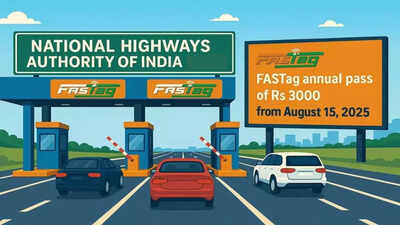
Follow WOWNEWS 24x7 on:
Updated: July 01, 2025 21:23

In a transformative push to streamline rural governance and service delivery, the Government of India is developing a comprehensive ‘cooperative stack’—a digital infrastructure designed to integrate all rural welfare schemes through Primary Agricultural Credit Societies (PACS). The initiative, spearheaded by the Ministry of Cooperation, aims to replace the current fragmented approach with a unified, transparent, and tech-enabled ecosystem for benefit disbursement.
Here’s a detailed breakdown of the initiative and its broader implications for India’s rural economy.
Key Highlights from the Announcement
- The cooperative stack will serve as a centralized digital platform to deliver multiple government schemes through PACS
- The initiative is modeled on the agristack framework and seeks to eliminate siloed systems across rural development programs
- PACS, which are legally backed institutions, will be the primary nodes for scheme implementation, replacing ad hoc or circular-based delivery models
- The move is expected to enhance transparency, reduce duplication, and improve last-mile delivery of subsidies, credit, and welfare services
Digitisation and Modernisation of PACS
- Of the 1.08 lakh PACS across India, around 63,000 are already in advanced stages of computerisation
- The government aims to digitise 80,000 PACS in the near term, enabling them to operate through secure, online platforms
- Digitisation will allow PACS to expand their service offerings beyond credit to include agri-input distribution, insurance, and e-commerce facilitation
- The initiative also addresses long-standing concerns around opacity and inefficiency in PACS operations
Strategic Rationale and Institutional Reform
- The cooperative stack is part of a broader effort to strengthen PACS as foundational rural institutions, rather than creating new delivery channels for each scheme
- By consolidating services under PACS, the government aims to reduce administrative overhead and improve accountability
- The initiative aligns with the Ministry of Cooperation’s vision to revive and modernize India’s cooperative movement, which dates back to the early 1900s
Technology and Governance Framework
- The stack will include modules for beneficiary authentication, scheme eligibility mapping, fund flow tracking, and grievance redressal
- It will be interoperable with other government platforms such as Aadhaar, DBT, and agristack, ensuring seamless data exchange
- The system will also support analytics for policy planning and real-time monitoring of scheme performance at the village level
As the cooperative stack takes shape, it promises to redefine how rural India accesses government support—by turning PACS into digitally empowered, multi-service institutions at the heart of village economies.
Sources: Economic Times, Rediff Money, July 1, 2025





